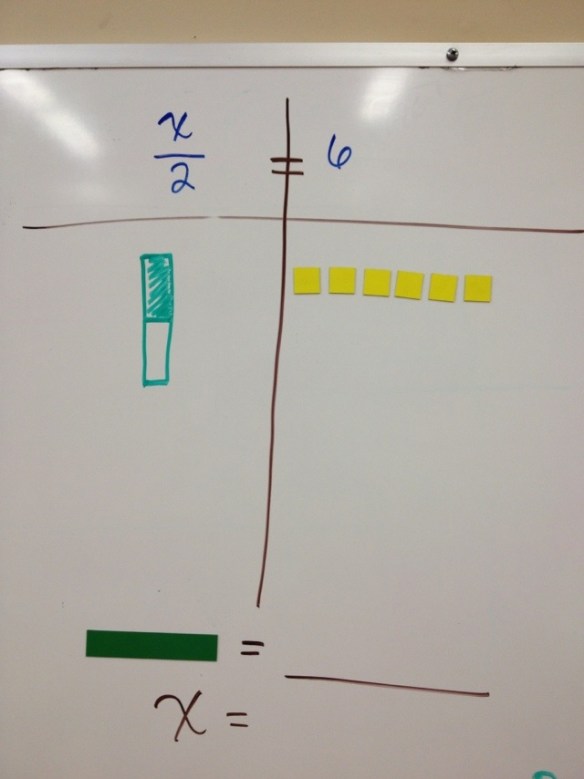Share this:
- Click to share on Facebook (Opens in new window) Facebook
- Click to share on X (Opens in new window) X
- Click to print (Opens in new window) Print
- Click to share on Reddit (Opens in new window) Reddit
- Click to email a link to a friend (Opens in new window) Email
- Click to share on Pinterest (Opens in new window) Pinterest


I just LOVE your blog!! I am your newest fan!! YOU should get Teacher of the Year!!!
Jan Stankovich
Thanks so much! 🙂
Please teach me to love algebra tiles….and also how to store them/hand them out in an efficient way 🙂
☼Kate
To The Square Inch
Yes, they are a mess! lol! I have each set in a sandwich sized ziplock baggie. Then, I have them all in a container for storage. I have students work in groups of two so there are LESS tiles flying around the room (dropping on the floor,…). Before class I put them in the ziplock baggies on the tables so they are ready to go. I also have an equation paper I made for them. I put the paper in a page protector and students can write on them with dry-erase markers.
As far as loving them go, I LOVE them. However, some of my students hate them and my most advanced students don’t really need them. But, they are so fabulous for students who struggle with abstraction. I insist they use them and I always use them for after school help. I also let students use the tiles on their tests without penalty. I use them mostly for equation solving and distributive property. They are great when illustrating distributing a negative and solving equations with fractions. An example I like even better is 2/3 x = 4. Even the students that don’t love the tiles go “Ahhh!” when I put that one up there. Many students start drawing them instead of using the tiles, then they stop drawing and have got it.
thanks for all the helpful lessons!
I’ve been struggling with how to represent division/fraction equations with algebra tiles. In looking at the picture, is the vertical x (drawn) broken into 2 parts because the denominator is 2? How do you model the thinking to the kids? Thanks for your help!
Hi Greg,
Yes, you are correct. I actually cut one of the x’s in half, once into thirds, and one into fourth’s when I show them this. I put the pieces back together on the board and say something like, “x over two is x divided in two” and we talk about what that means. I drawn an outline around the entire x, then divide it into half by taking the second half off of the board, leaving the outline. The students then see that if half of an x is 6, they need 6 more to make a whole x. So, x = 12. They do this algebraically as well but it really comes together when they see it visually. I think it helps them “believe” that it is true. Seeing is believing. 🙂